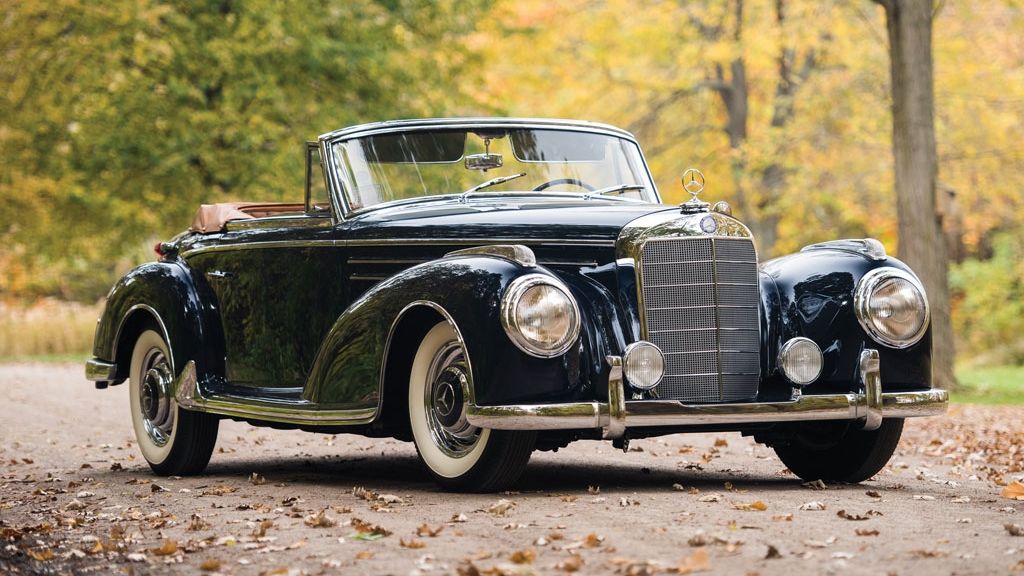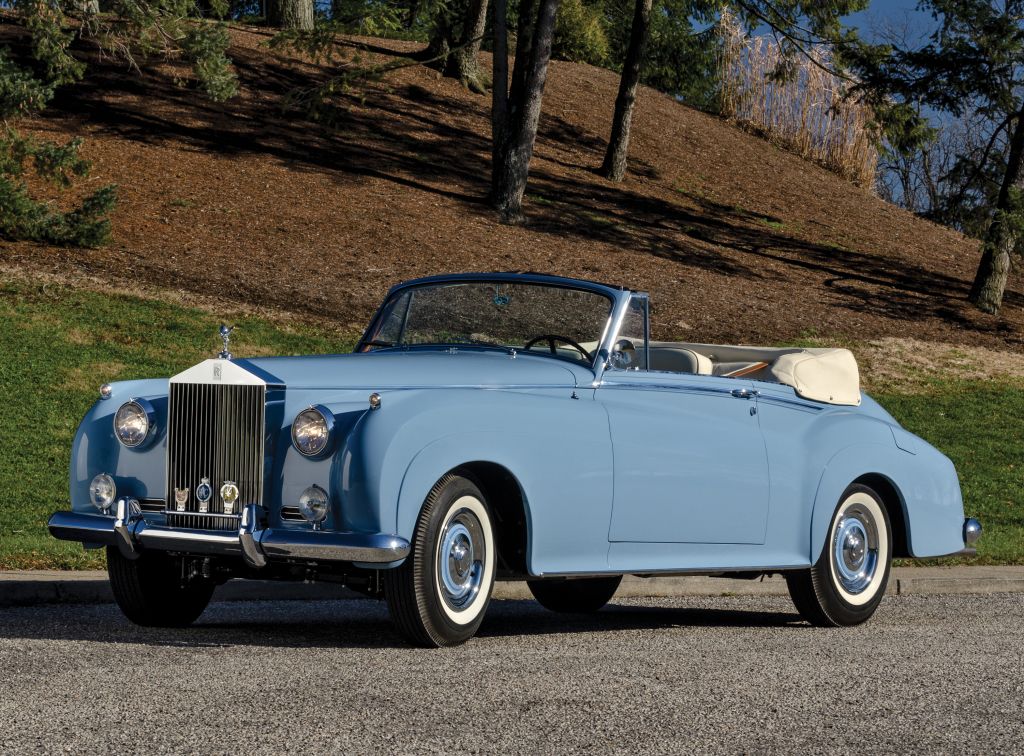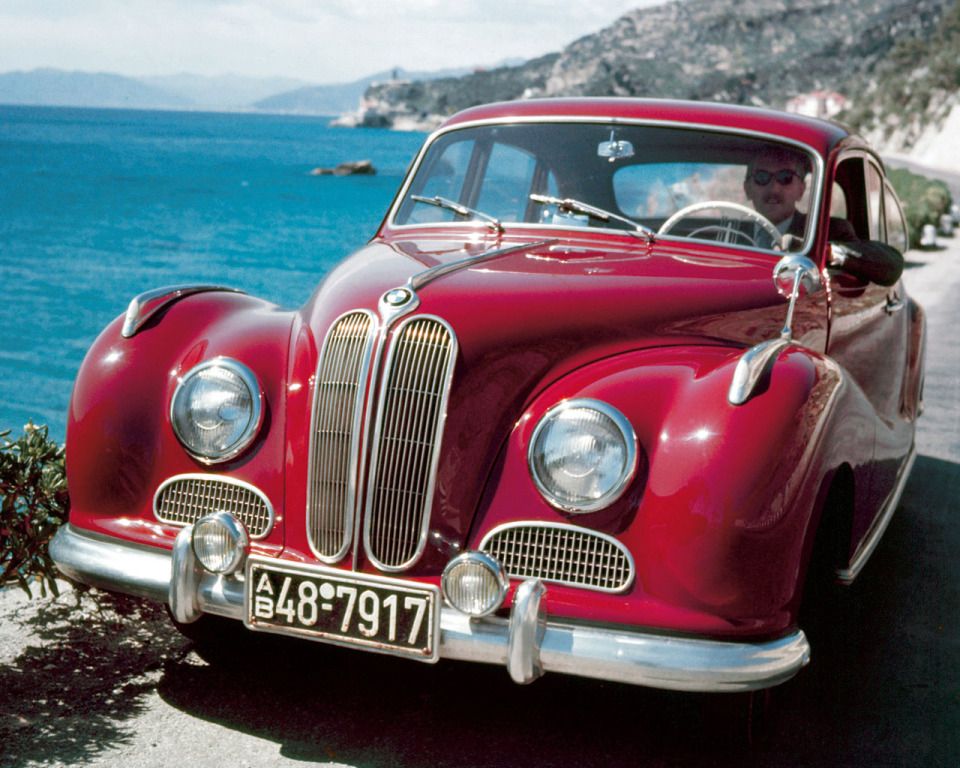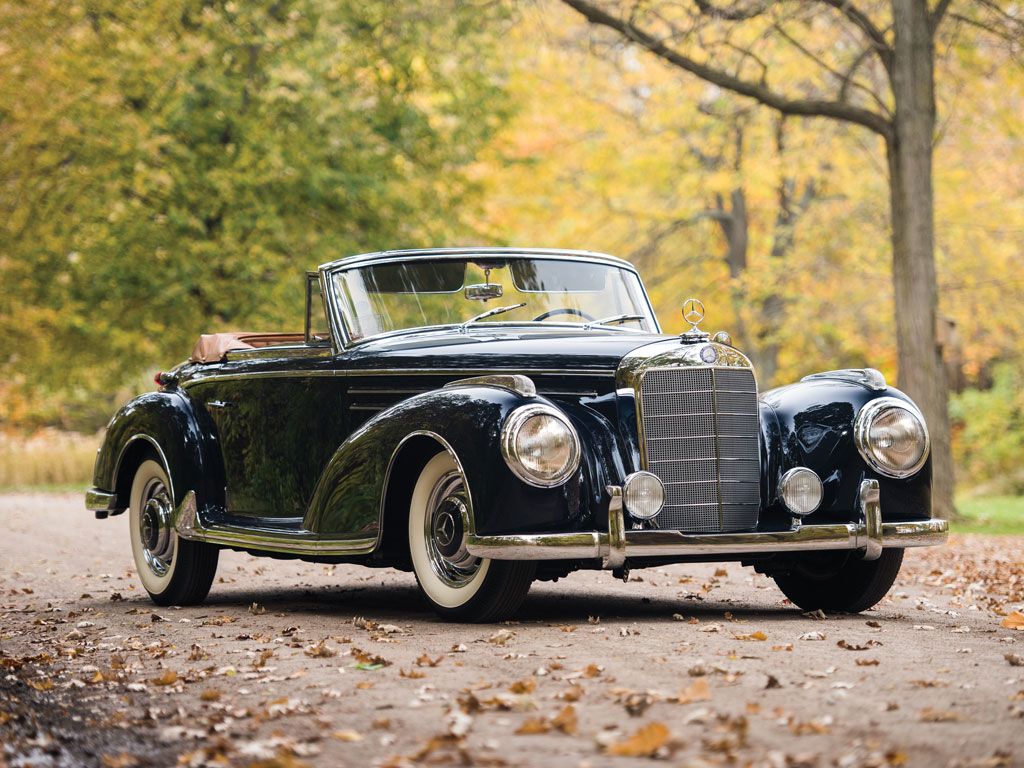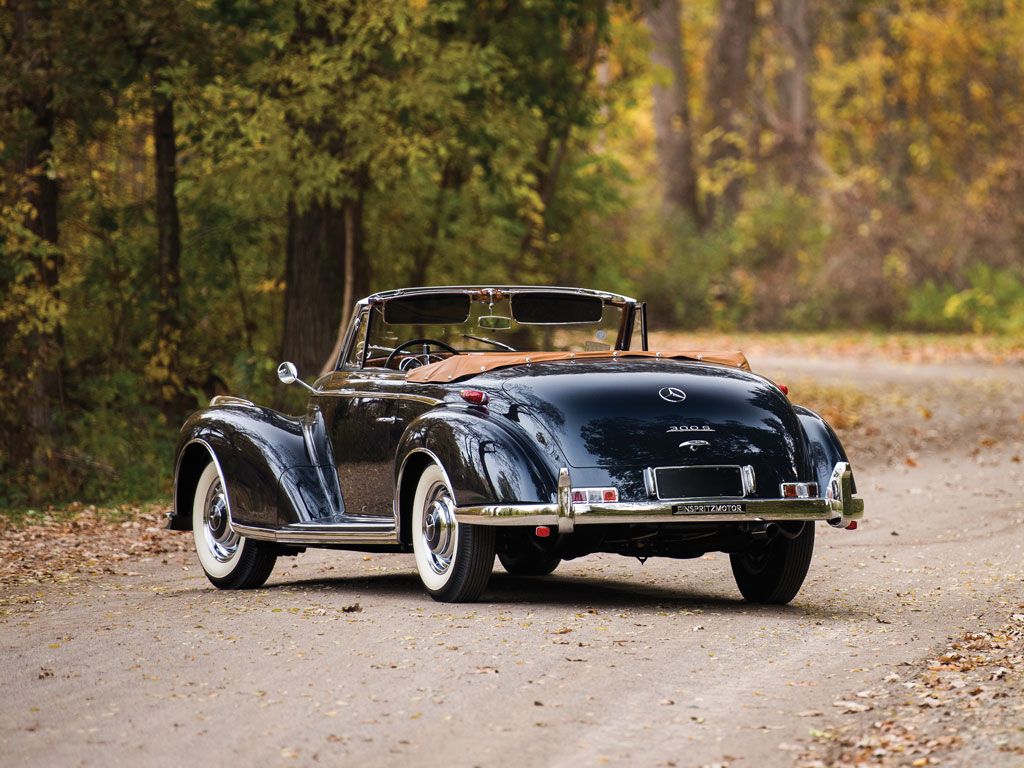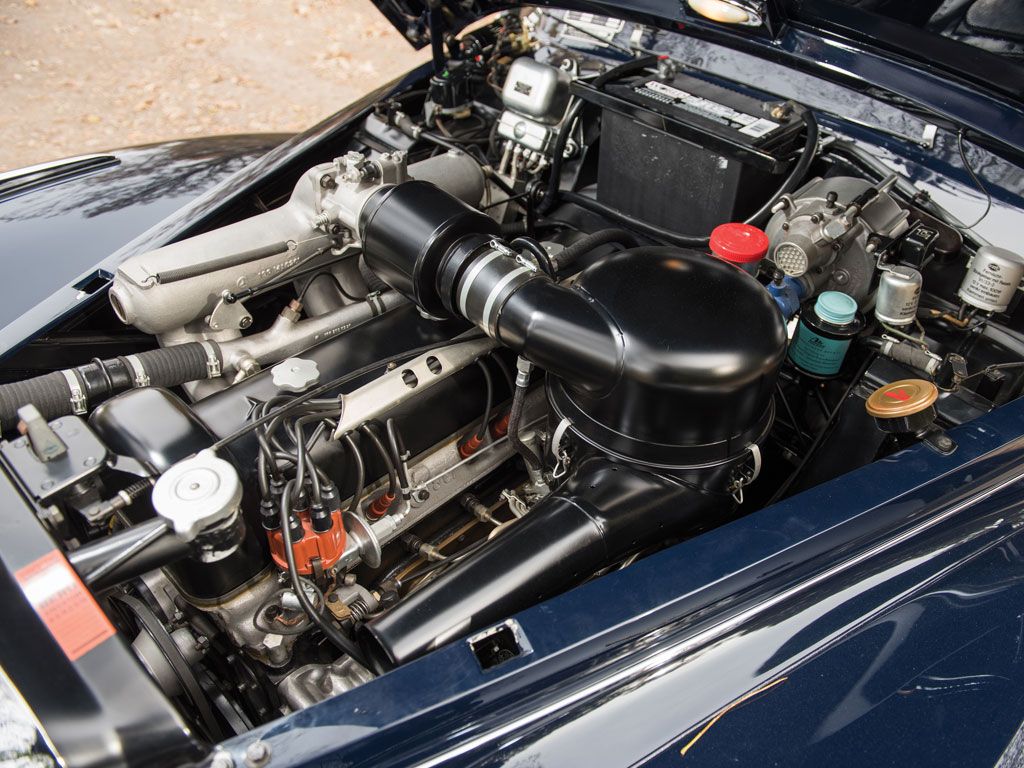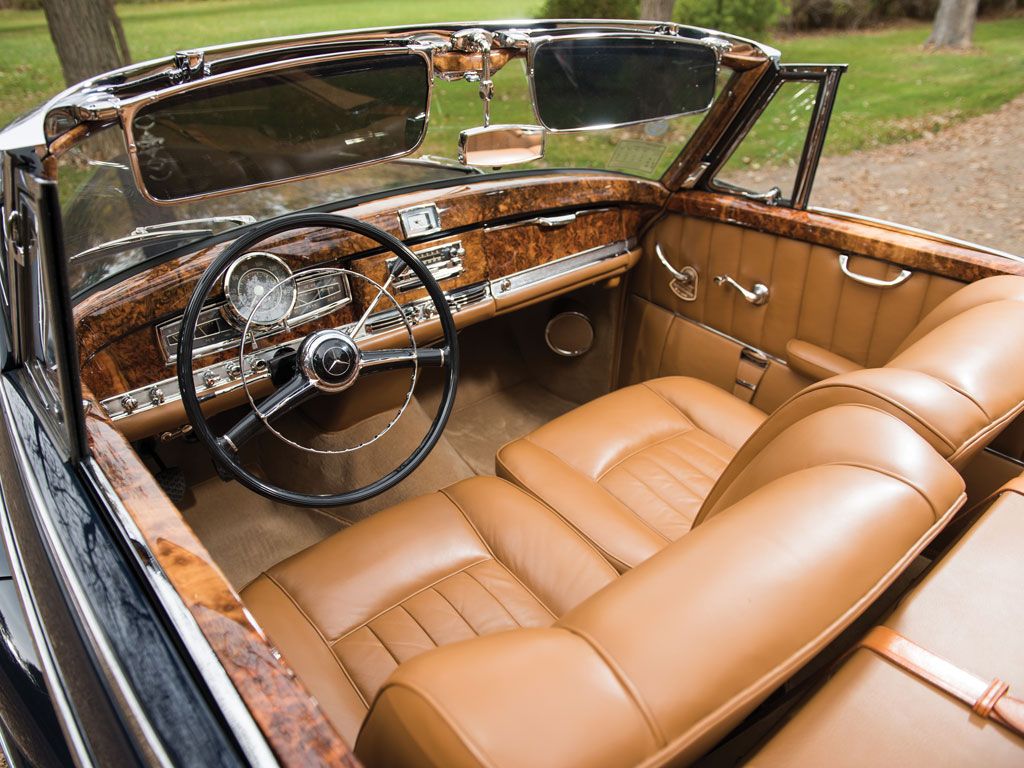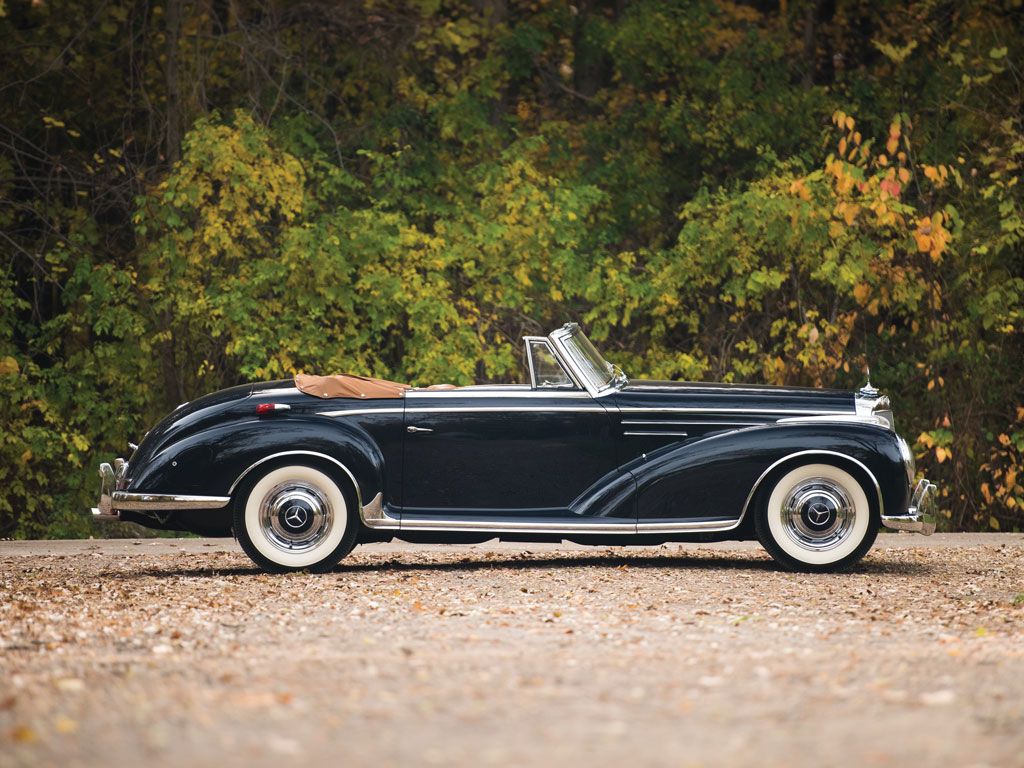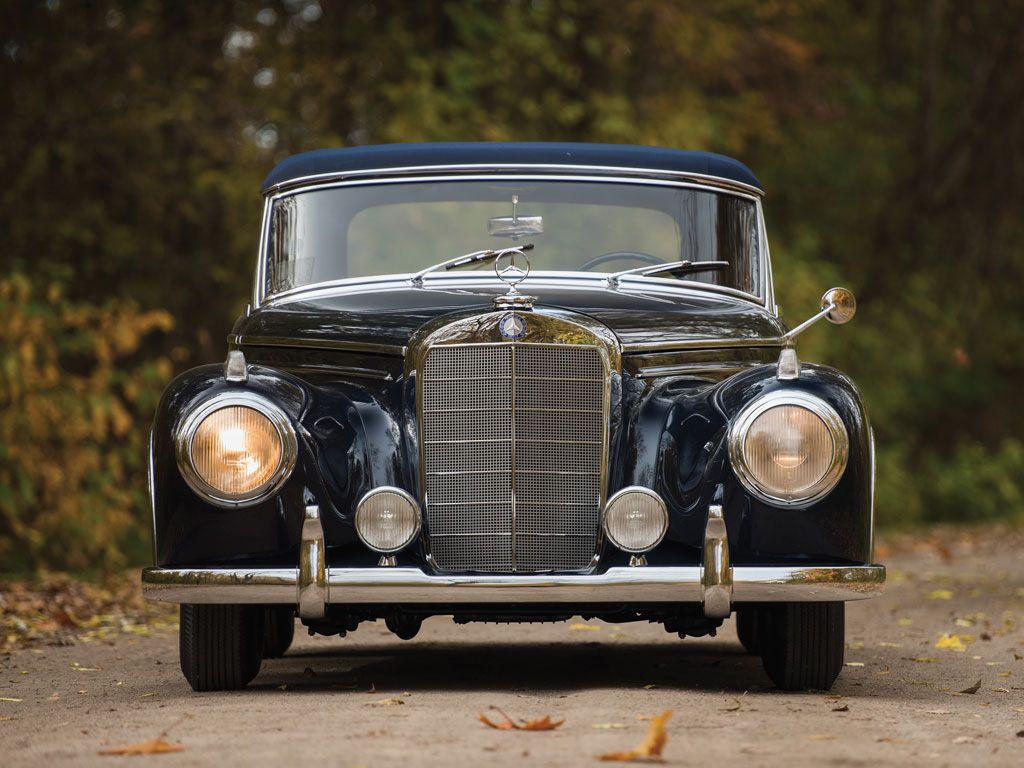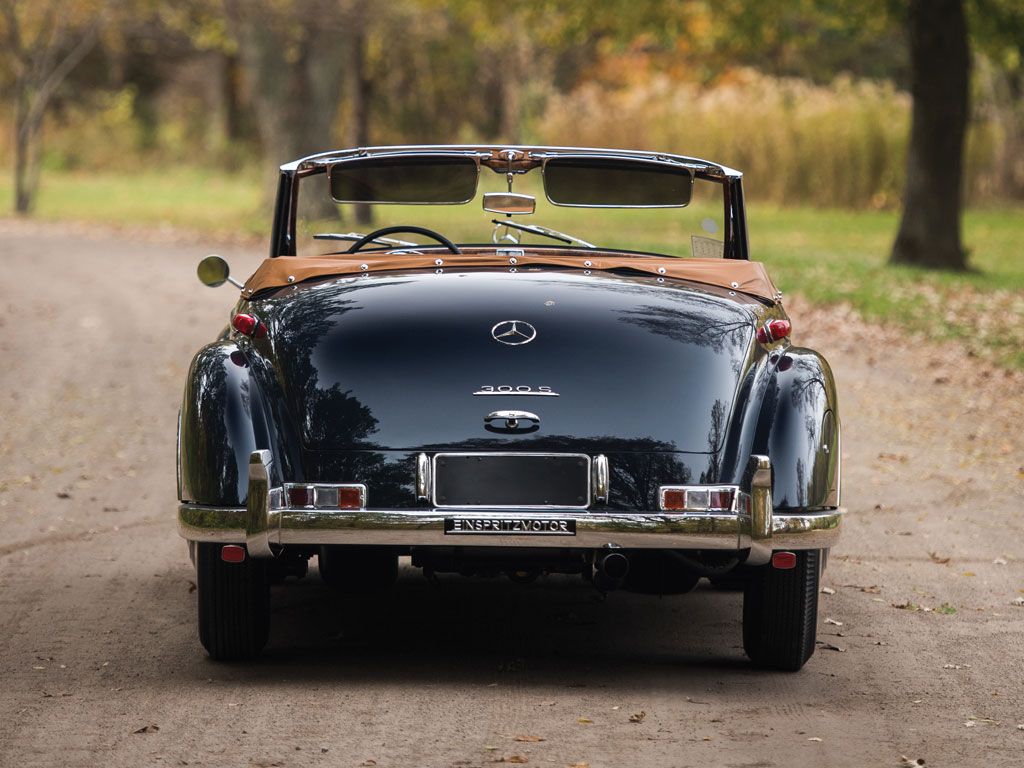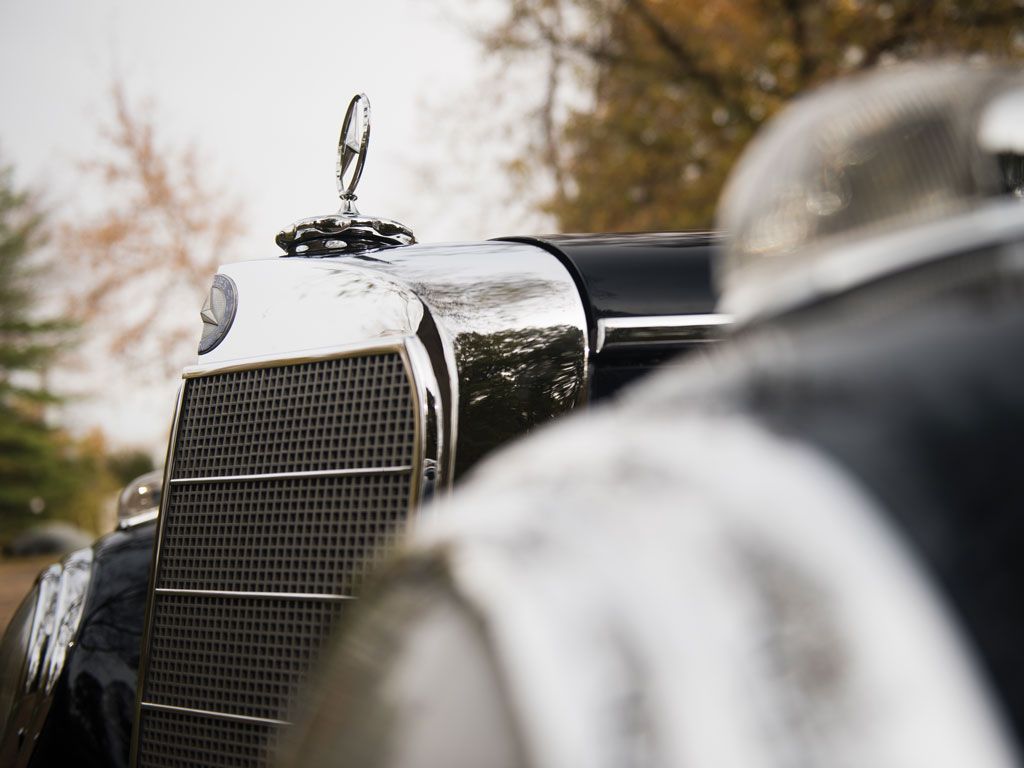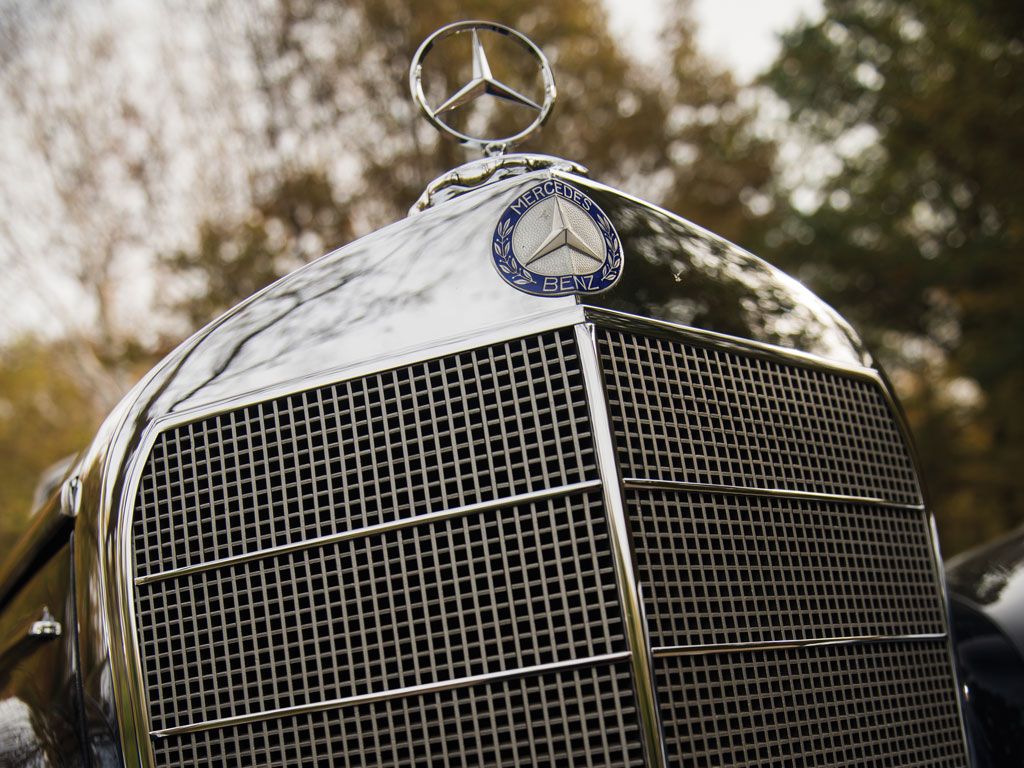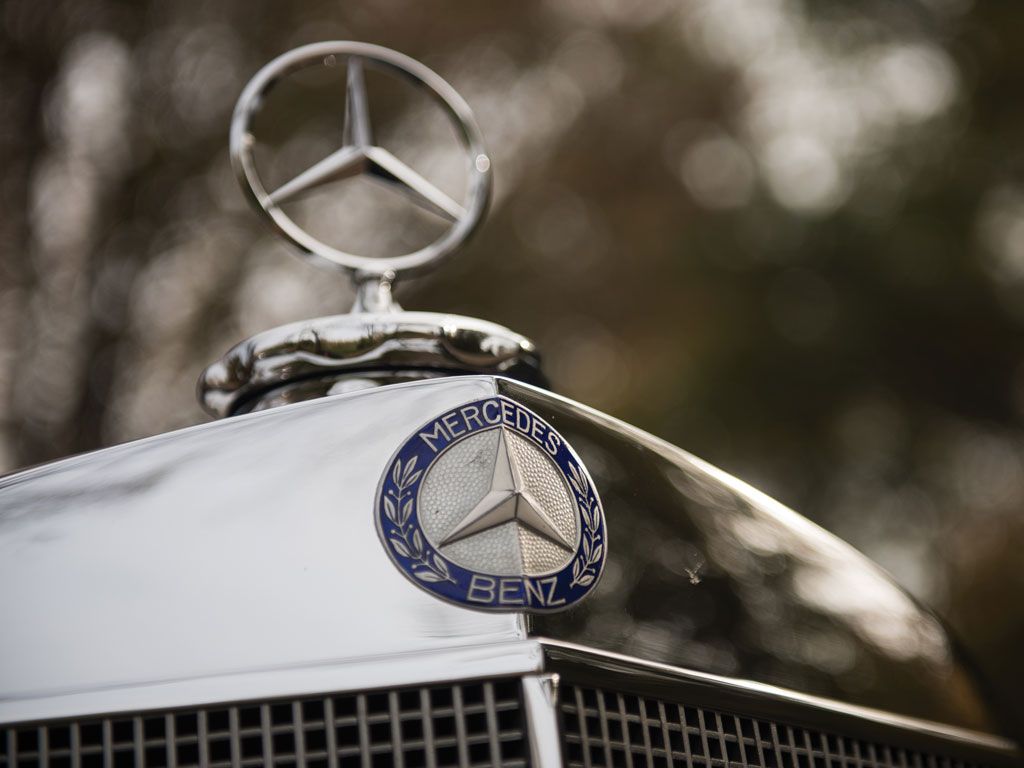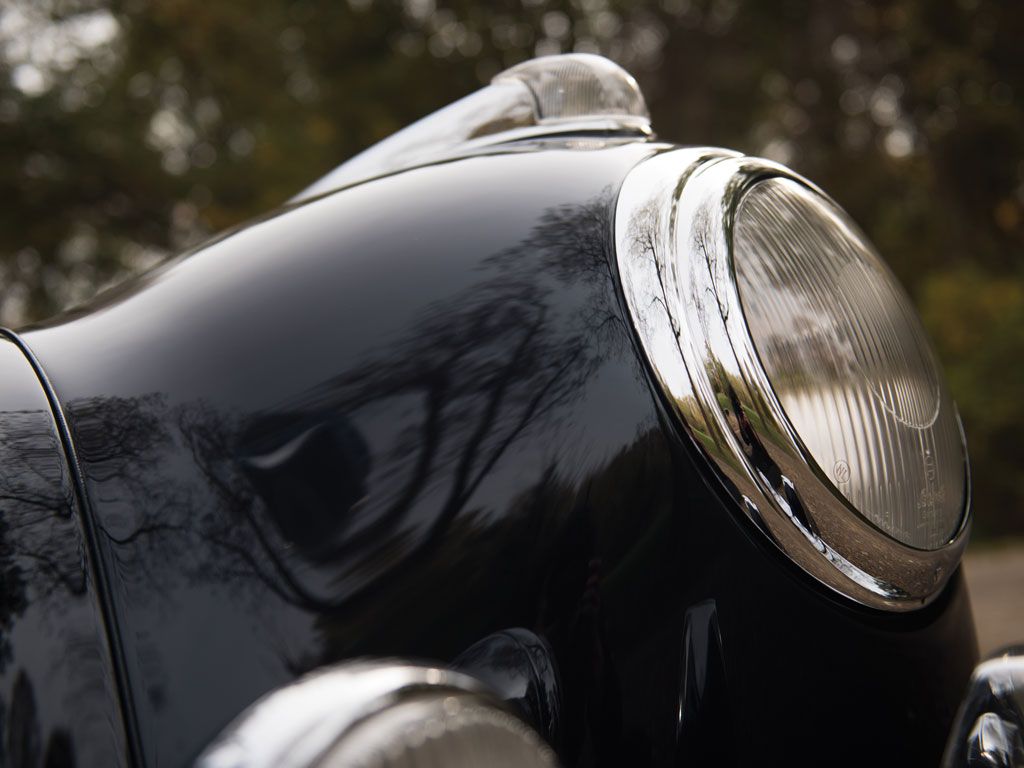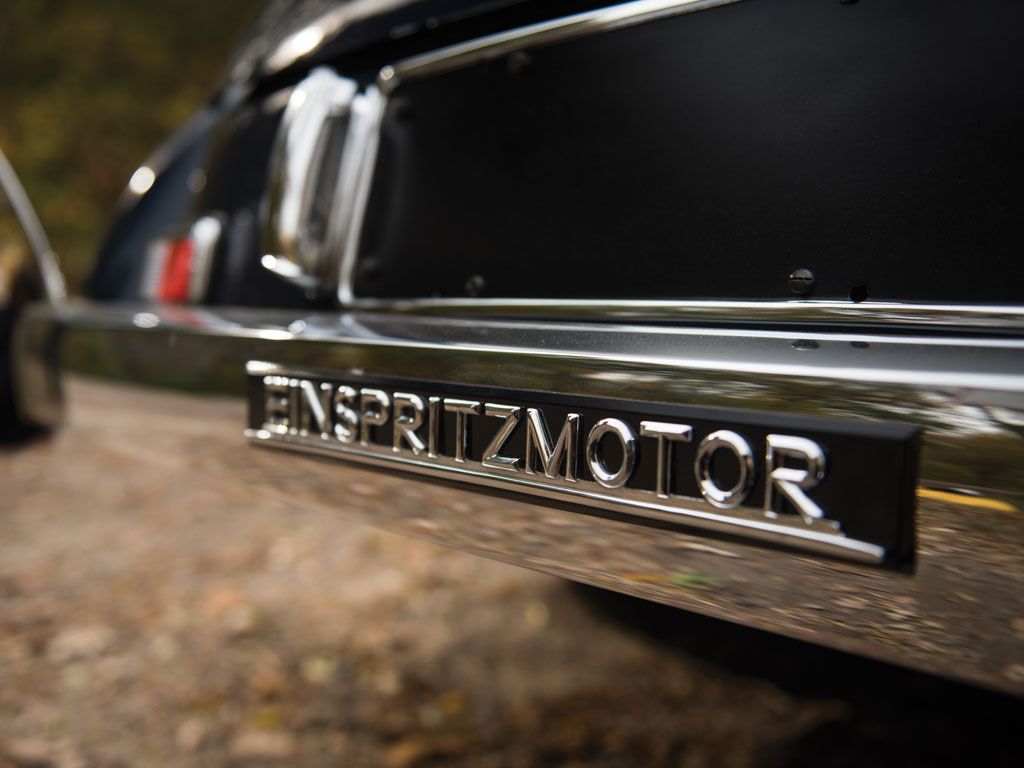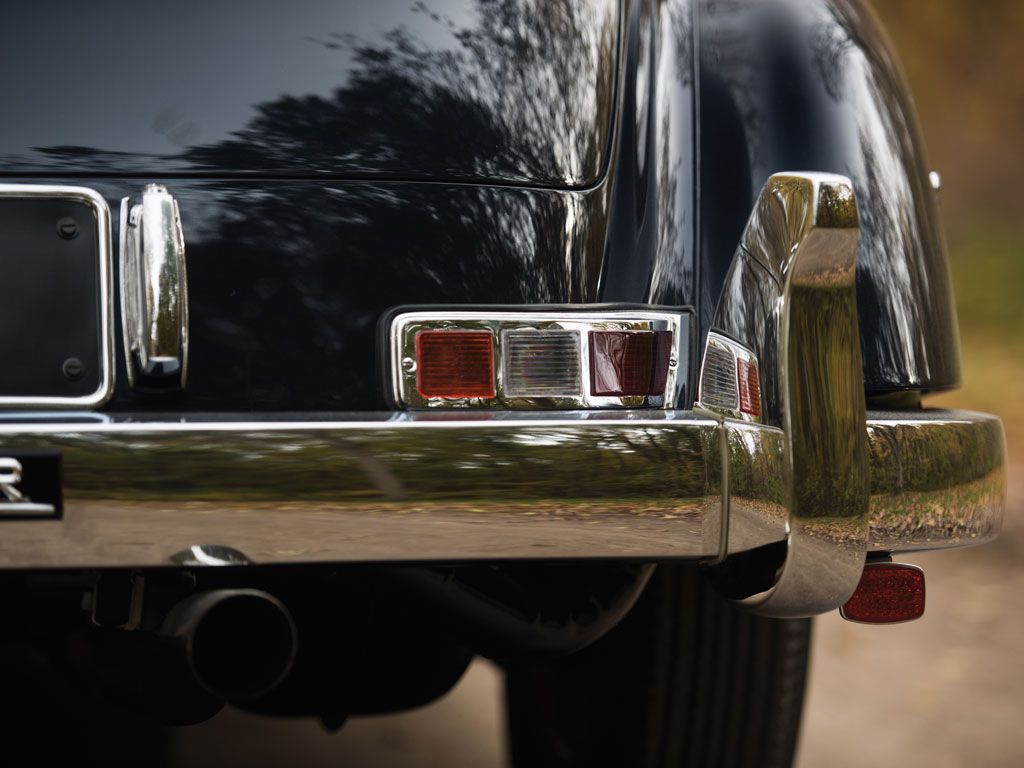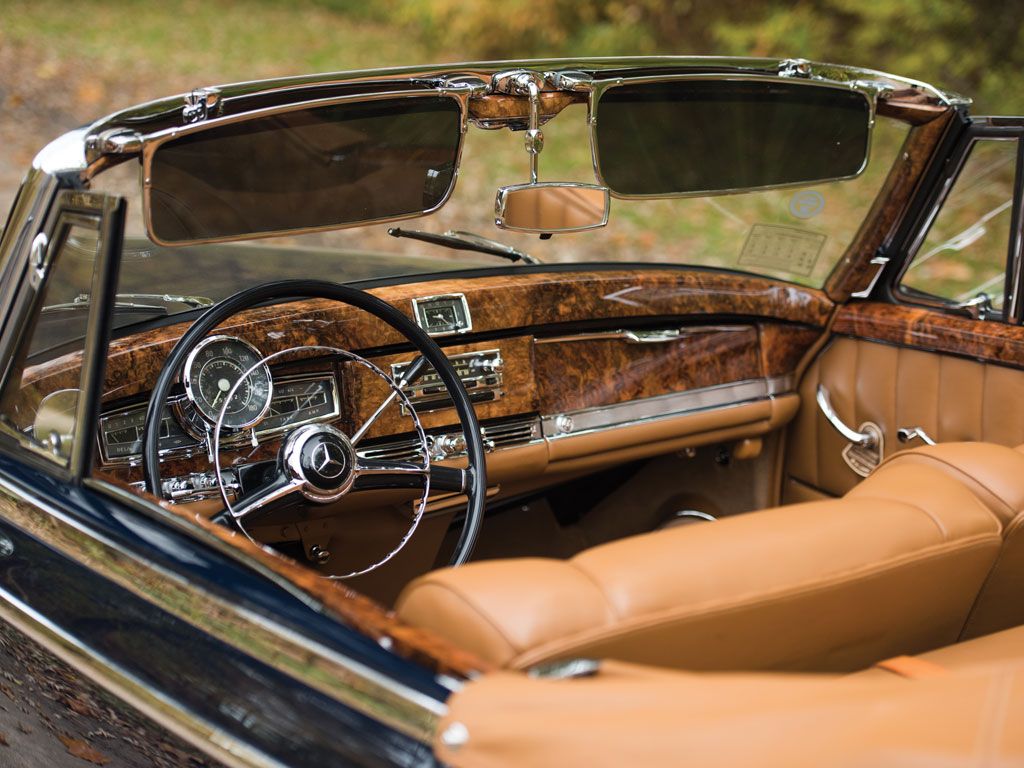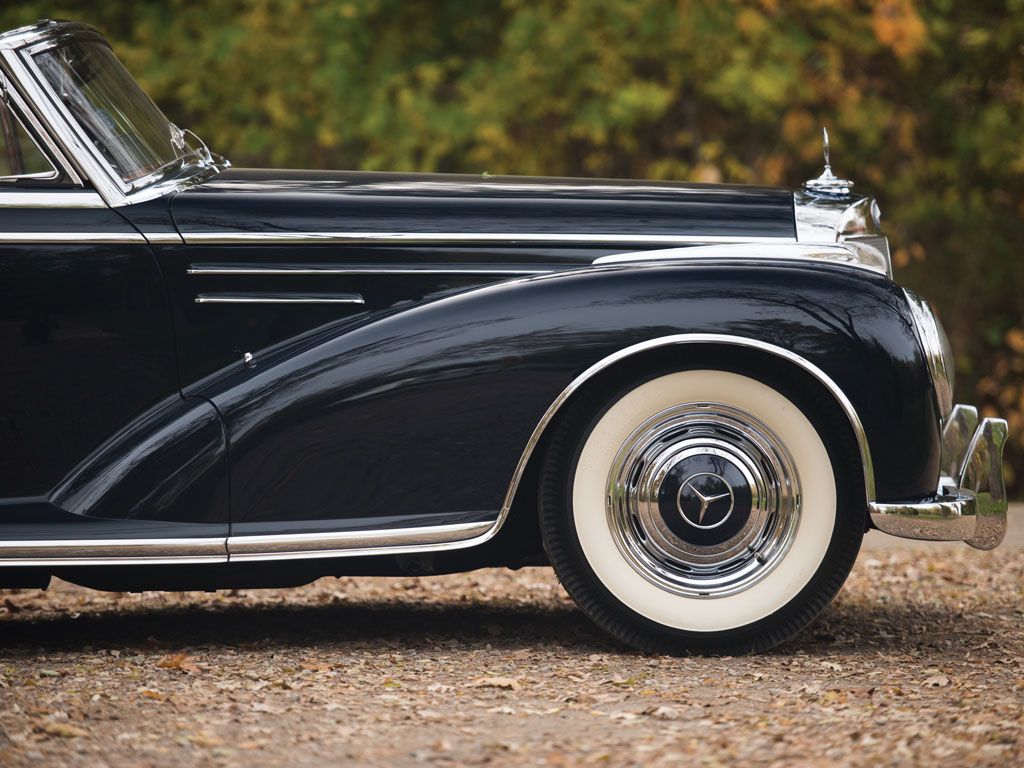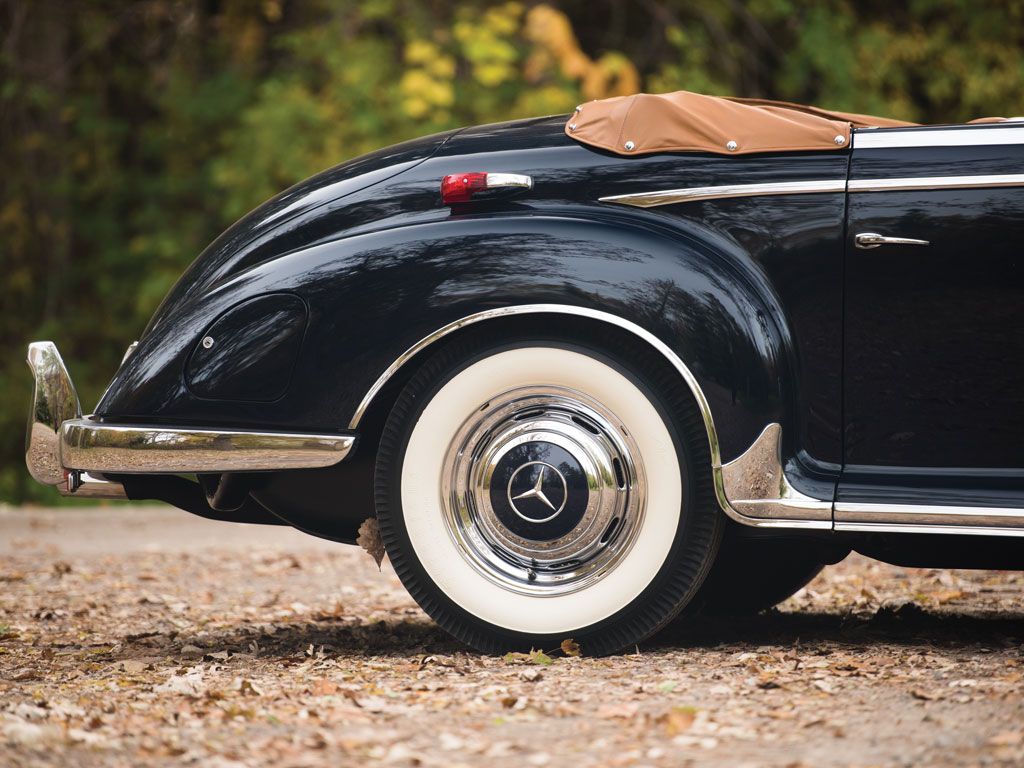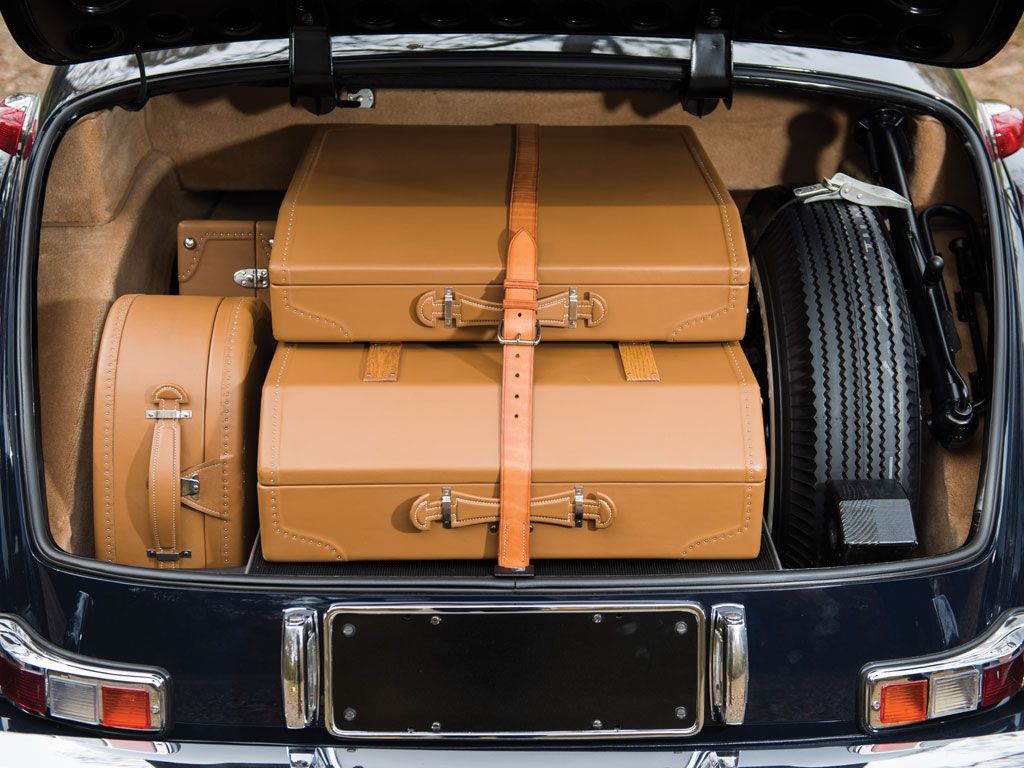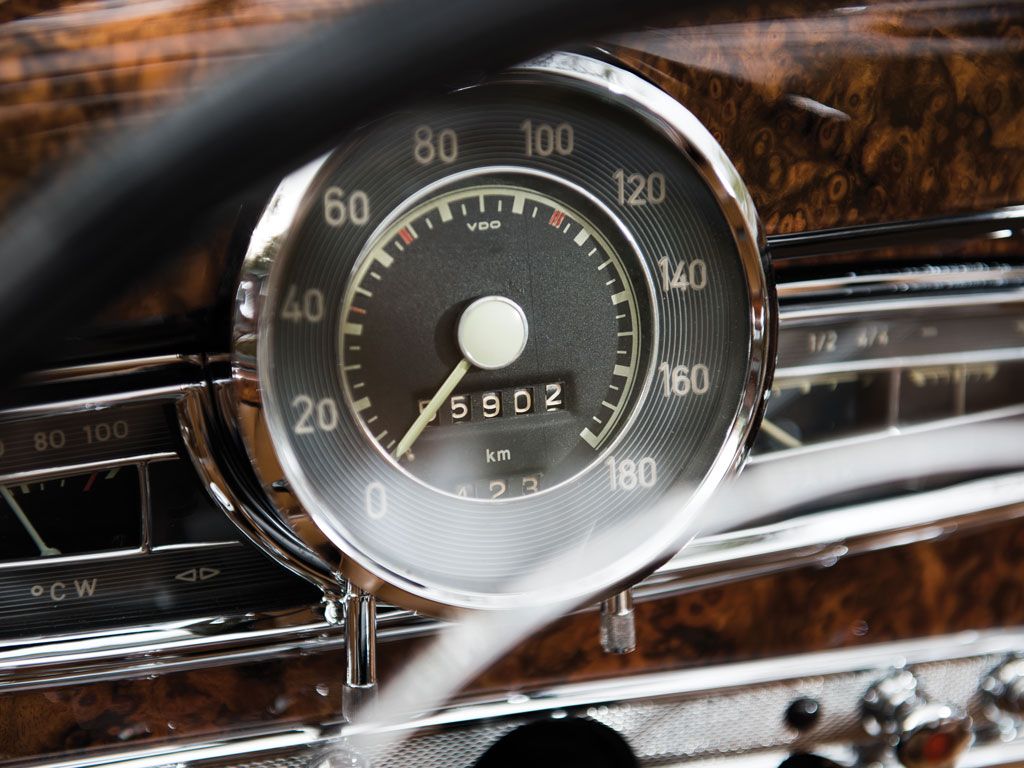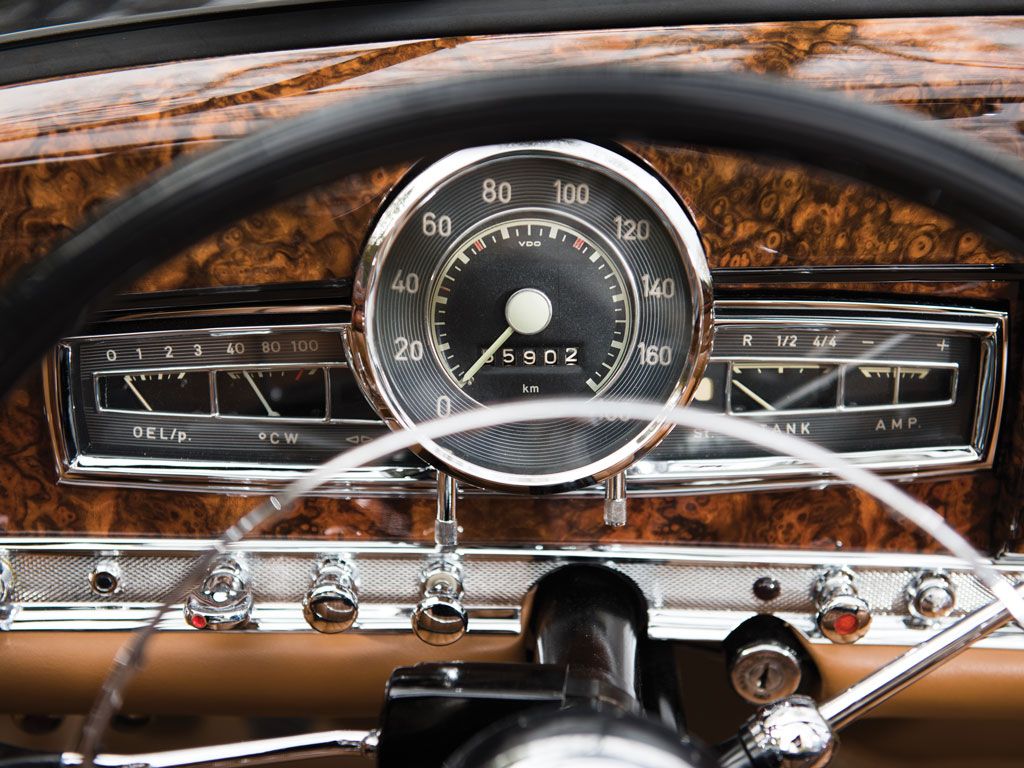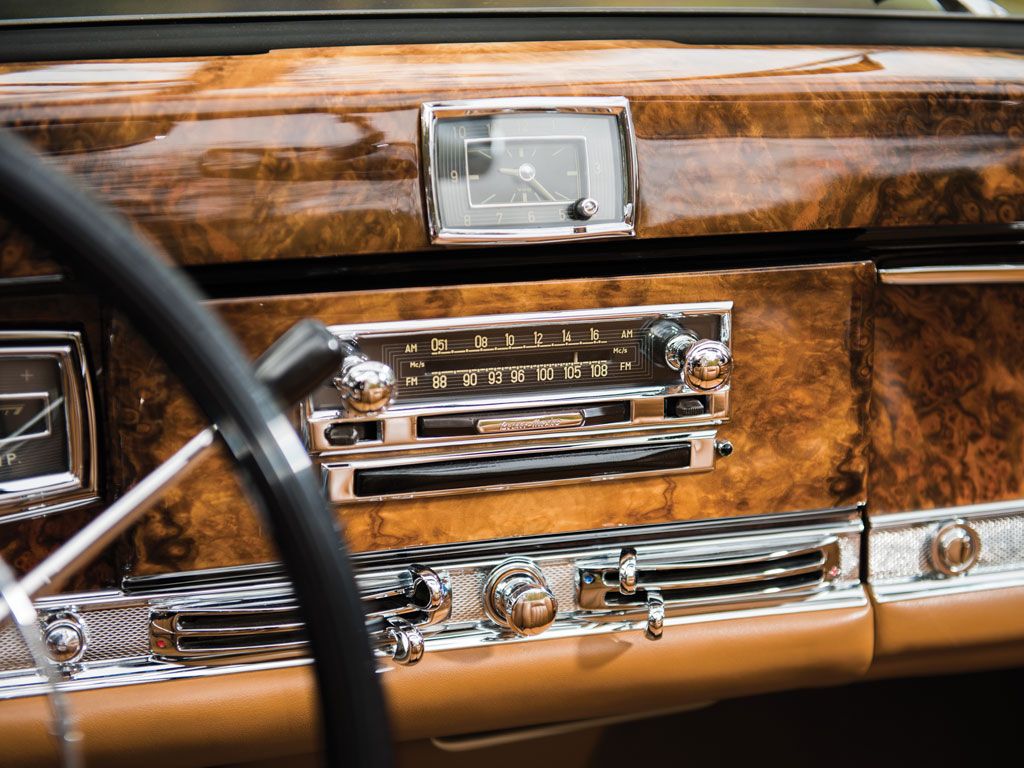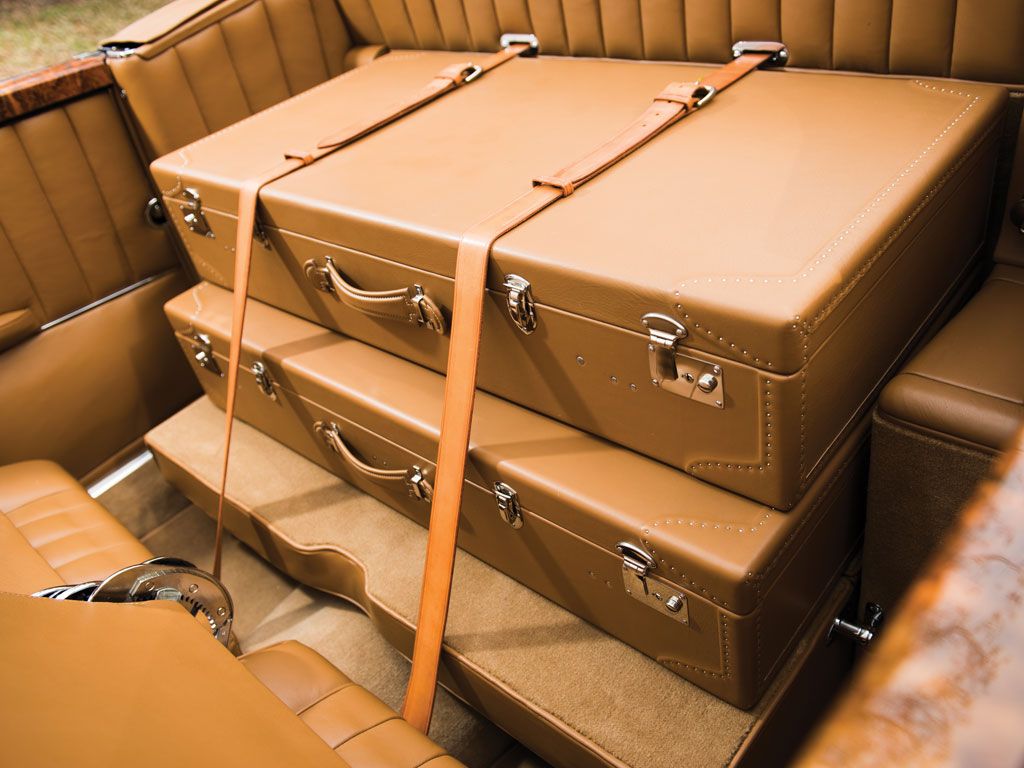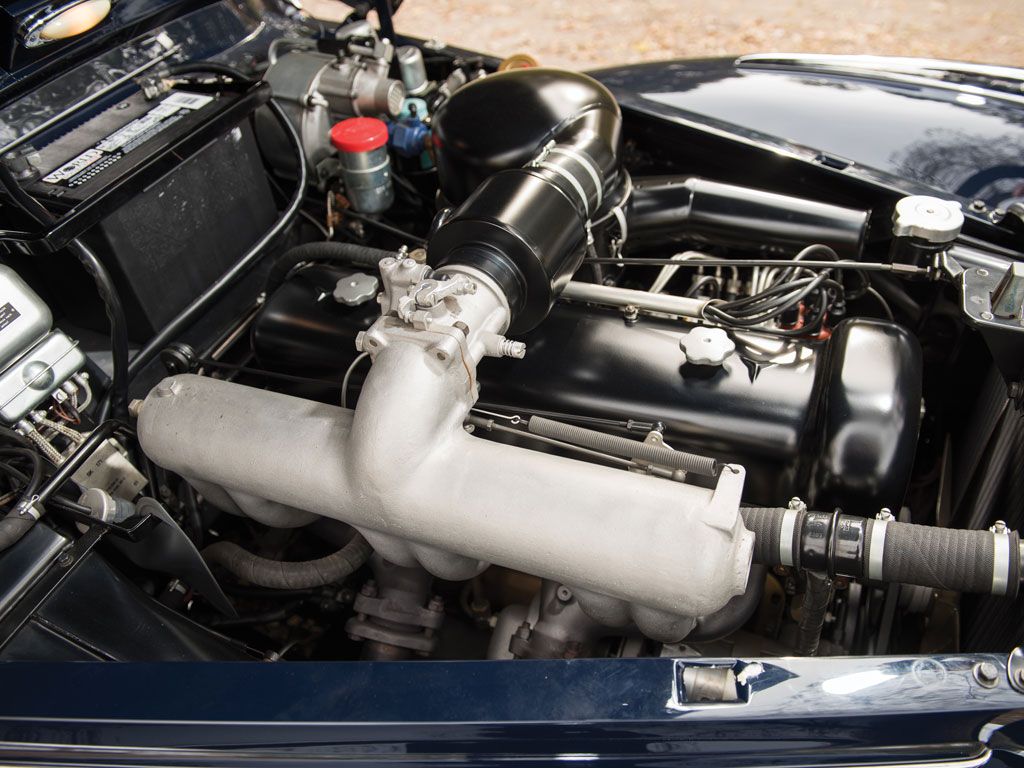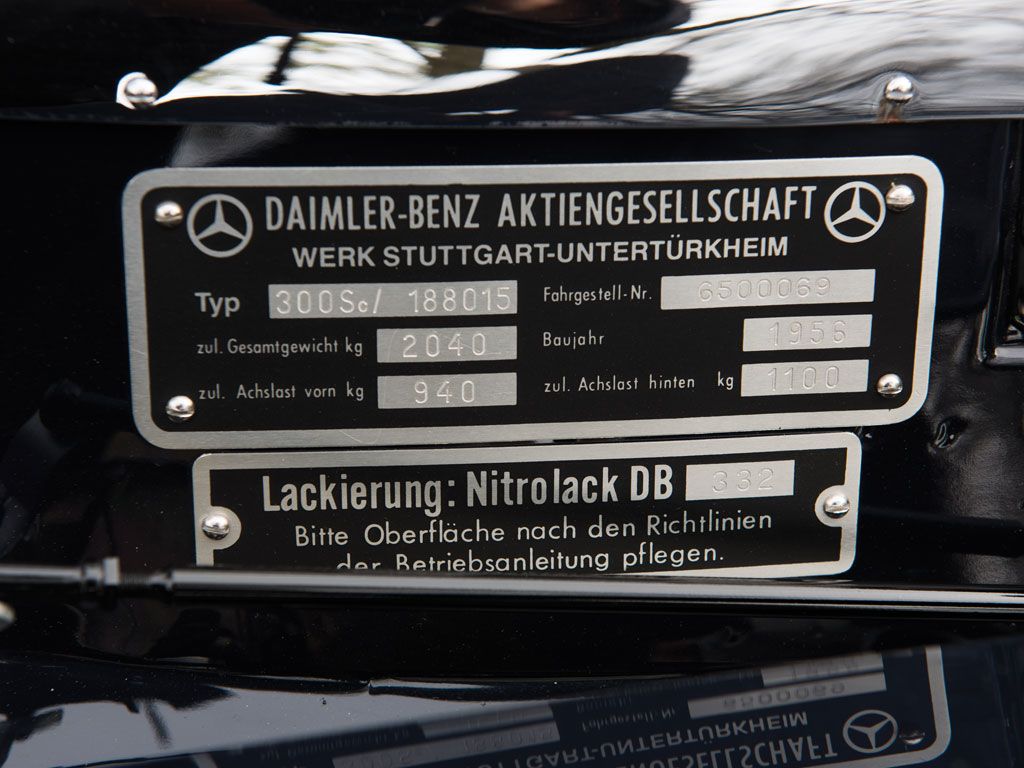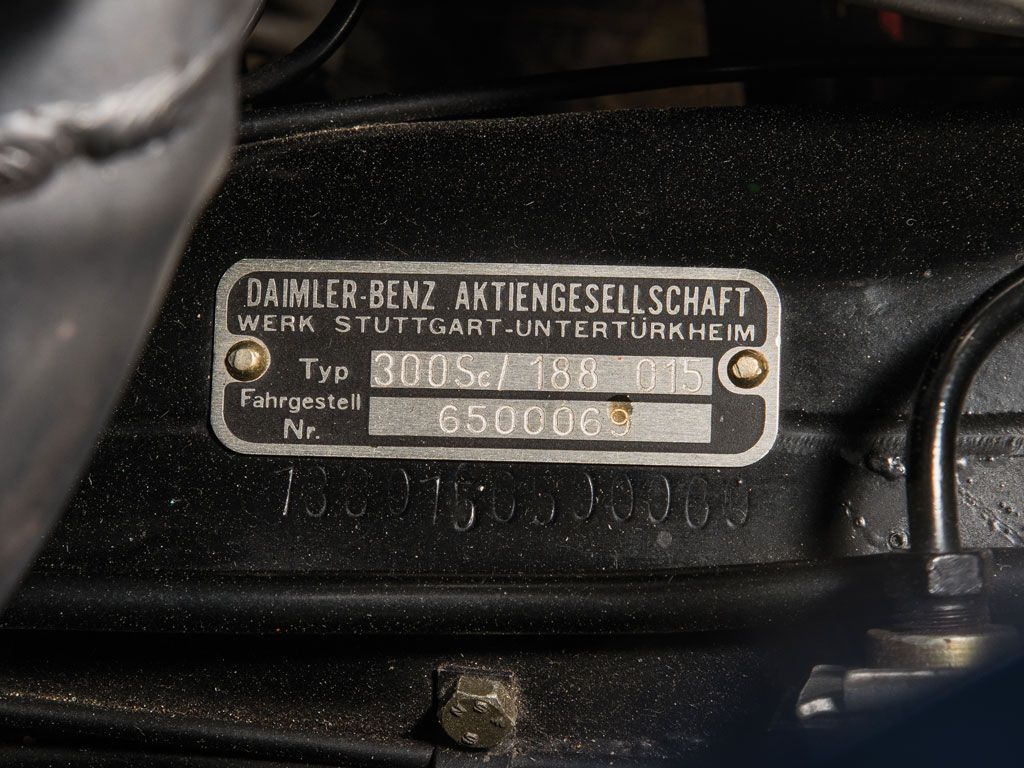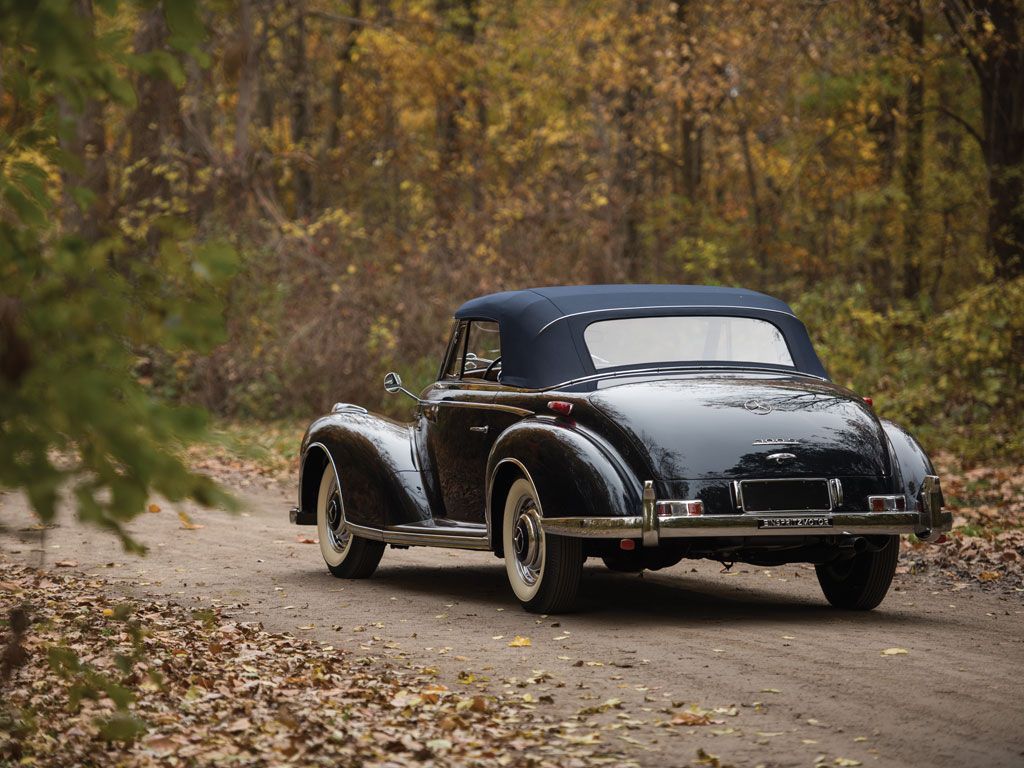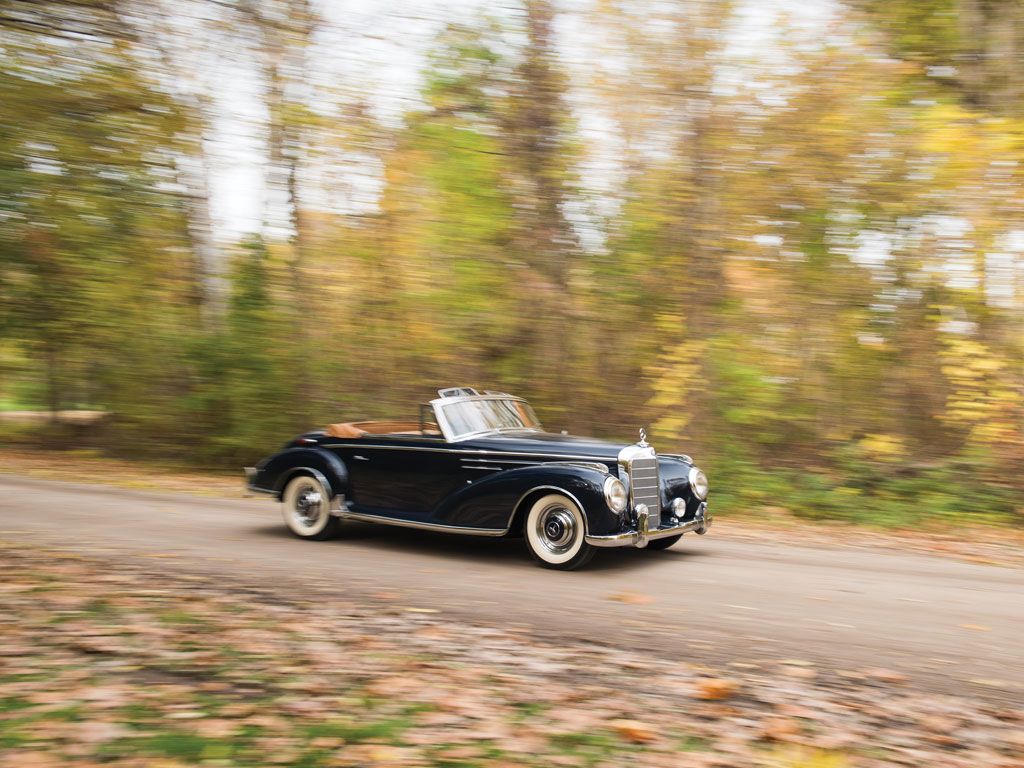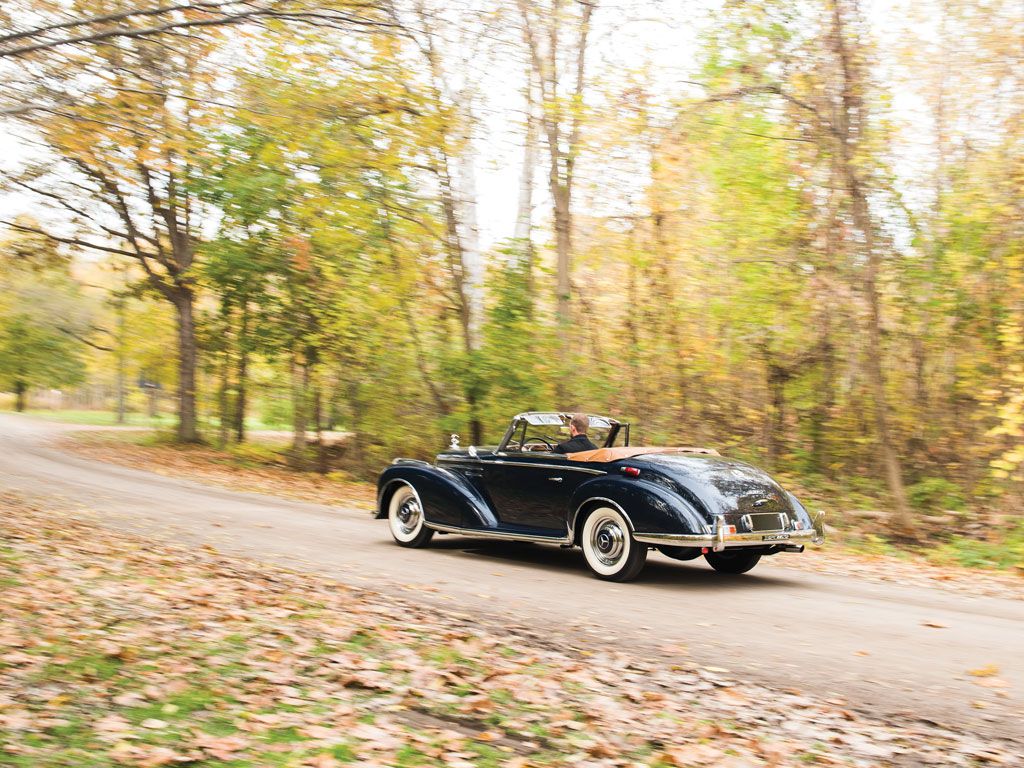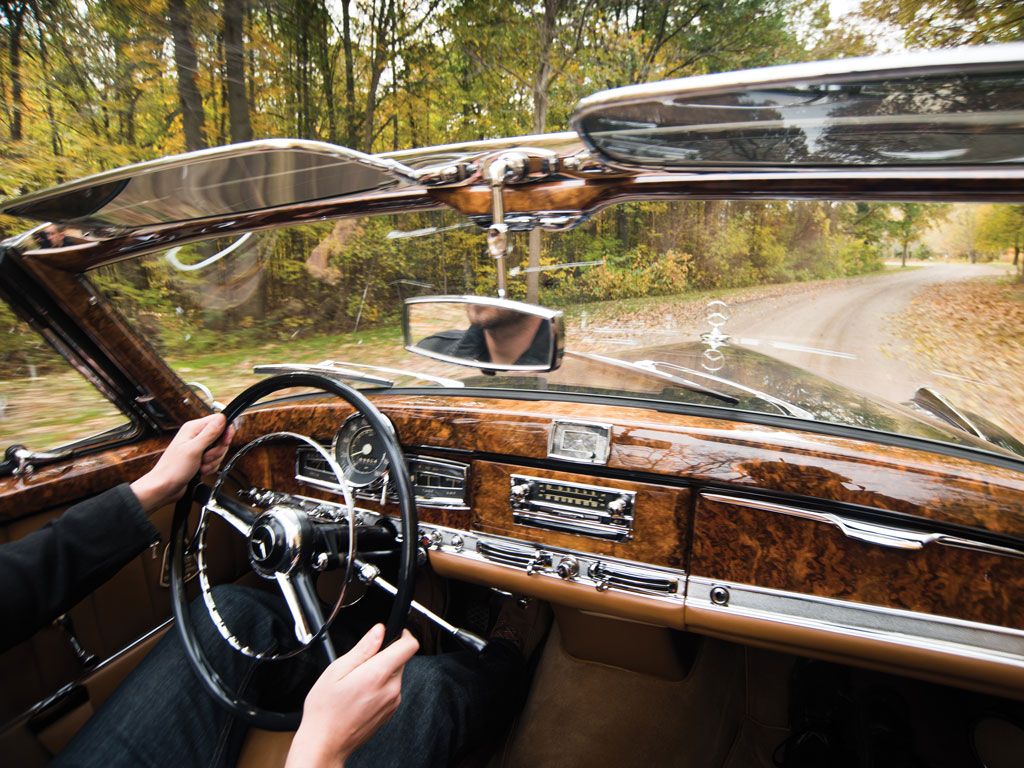The future of the luxury car market was very uncertain in the years immediately following WWII. With rationing still going in parts of Europe into the '50s, and most German manufacturers having had their factories bombed by the Allies, it wasn't entirely clear in the late '40s and early '50s just who would be either building or buying luxury cars. The companies that made successful luxury cars->ke505 in the years immediately following the war were those that learned to emphasize performance, handling, and build quality over things like bespoke bodywork that had driven the prewar luxury car market.
One of the most successful of this new kind of luxury car was the Mercedes-Benz 300 series limousines, which debuted in 1951. The following year, Mercedes->ke187 made a coupe based on the 300 that was called the 300s, and this was followed up by an improved version called the 300Sc. The car was available as a hardtop coupe,->ke141 cabriolet->ke144 and roadster.->ke1418 It's all very similar to how Mercedes uses the current S-Class,->ke359 a car that is available as a sedan, limo,->ke1203 coupe and soon even as a convertible. It was a big success for Mercedes, and gave established top-tier luxury marques a run for their money.
Continue reading to learn more about the 1956 Mercedes-Benz 300 SC Roadster.
1956 Mercedes-Benz 300 SC Roadster
- Make: Array
- Model: 1956 Mercedes-Benz 300 SC Roadster
- [do not use] Vehicle Model: Array
Exterior
The elegant bodywork of the 300Sc was penned by Hermann Ahrens, the man who had also designed one of Mercedes-Benz's greatest prewar cars, the 540 K. Every body panel was formed by hand, and leaded to minimize gaps and make the lines of the edges perfect. Assembly was by hand as well, and each car was made to order. One of the big differences between the cabriolet version of the car and the roadster, is that the roadster was expected to be driven with the top down as often as possible, and therefore came with a tanneau cover for the top. Even two-door versions of the 300 are similar in size to the current S-Class, a little bit shorter in length, but also a few inches taller.
Interior
The interior is where Mercedes was able able to offer some of the bespoke touches that those customers who remembered being able to order custom bodies would have been missing. Customers could choose from a virtually limitless choice of interior colors, and could even specify what sort of wood and finish they wanted for the trim. In this case, it is burled walnut, and the veneers are book-matched and symmetrical.
Considering the wood is not only on the dash, but also the tops of the doors and around the windshield, this is quite an accomplishment. The 300Sc did not have air conditioning, not even as an option. Even as far back as 1956, this was unusual for a car costing this much, but at least with the roadster, it made sense not to include it when the understanding was that you would have the top down pretty much all of the time anyway.
The interior of the roadster contains another important difference between it and the cabriolet. The cabriolet has a back seat, and even if it is only a half-hearted one, it is more than the roadster has, which is a parcel shelf. For those 300Sc buyers that opted for the luggage matched to their interior luggage -- as this one did -- there are two extra pieces of luggage made to fit this shelf and go with the other five pieces that fit perfectly into the trunk.
Drivetrain
It might come as a surprise that the 300Sc only had a six-cylinder engine. At this point in history, although luxury carmakers had largely backed away from the 12- and 16-cylinder engines found in larger prewar cars, eight cylinders was still pretty much the norm. Rolls-Royce and Bentley were also using six-cylinder engines at this point, but they were much bigger than the 3.0-liter power plant found in the Mercedes. But, what the 300Sc lacked in cylinders and/or displacement, it made up for in technology.
This wasn't just any ordinary inline-6 found under the hood, it was a version of the same engine found in the 300SL race car and later the road car. Early versions of the 300 series used carburetors, but by the time the 300Sc had debuted, it had switched to the same Bosch fuel injection found in the 300SL, and power was up to 175 horsepower. That was enough power to keep up with the other big luxury cars of the day, and Mercedes designed the engine to be able to withstand being driven at top speed all day long, something that would still be impressive today.
Prices
The 300Sc was not a cheap car in its day, and most of the 300 series cars that were ordered were of the four-door variety. The roadster is the rarest of the body types offered, with just 53 units produced. This one was restored by Charles Brahms, a noted expert in 300 series Mercedes cars. These things, combined with the fact that the car has all of its original luggage, make this car exceptionally rare for a postwar Mercedes, and RM Auctions has estimated its value between $1.2 million and $1.4 million. At that price, it is even one of the more valuable 300Sc roadsters in the world, with prices usually maxing out at just under $1 million.
Competition
Rolls-Royce Silver Cloud
Like the 300, the Silver Cloud was available as a sedan, coupe or convertible. It also had an inline-6 engine, but one area where it had a distinct advantage over the Mercedes was air conditioning, in that it had any at all. The Silver Cloud sold in staggeringly big numbers for a Rolls-Royce up to that point, especially given that the Bentley S series of cars were essentially just rebadged Silver Clouds. Elvis had one, and so did Frank Sinatra. They were the standard for all big luxury cars of the day.
BMW 501
Nicknamed the “Baroque Angel” for the flowing lines of its bodywork, the 501 was the first car BMW built following WWII. It was also the first postwar German car to come with a V-8, and BMW sold a lot of them. It was a more mainstream luxury car than the hand-built 300Sc, and the lower price tag meant less exclusivity. But, it was still a beautiful luxury car, and just what BMW needed to help it get back on its feet.
Conclusion
It was cars like the 300Sc that showed the world that a well-designed and well-built car didn't need an entire custom body in order to be special. Production runs of just a dozen units weren't necessary for exclusivity in a global luxury car market either, and the fact that the current S-Class so closely mirrors the strategy behind the 300 series is a testament to how well planned out the car was, even so soon after the war. The 300Sc was an excellent car, and it's no wonder that Mercedes-Benz was able to evolve the idea so well over the years.

